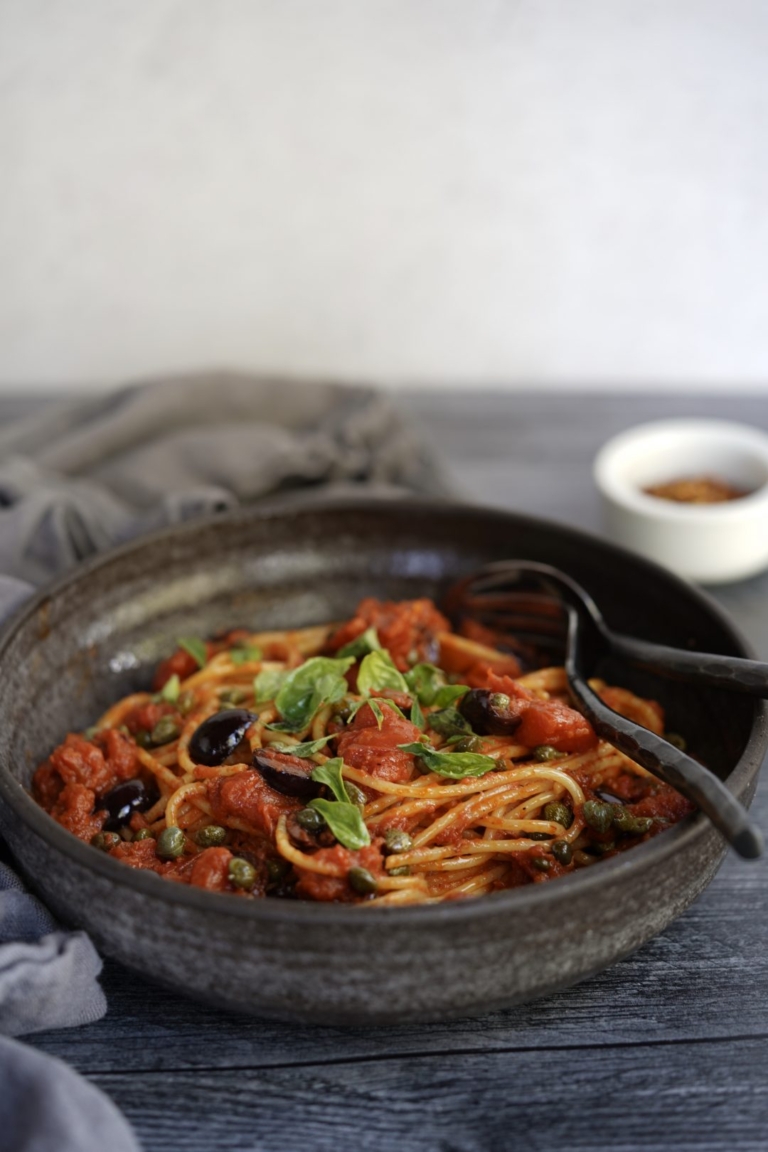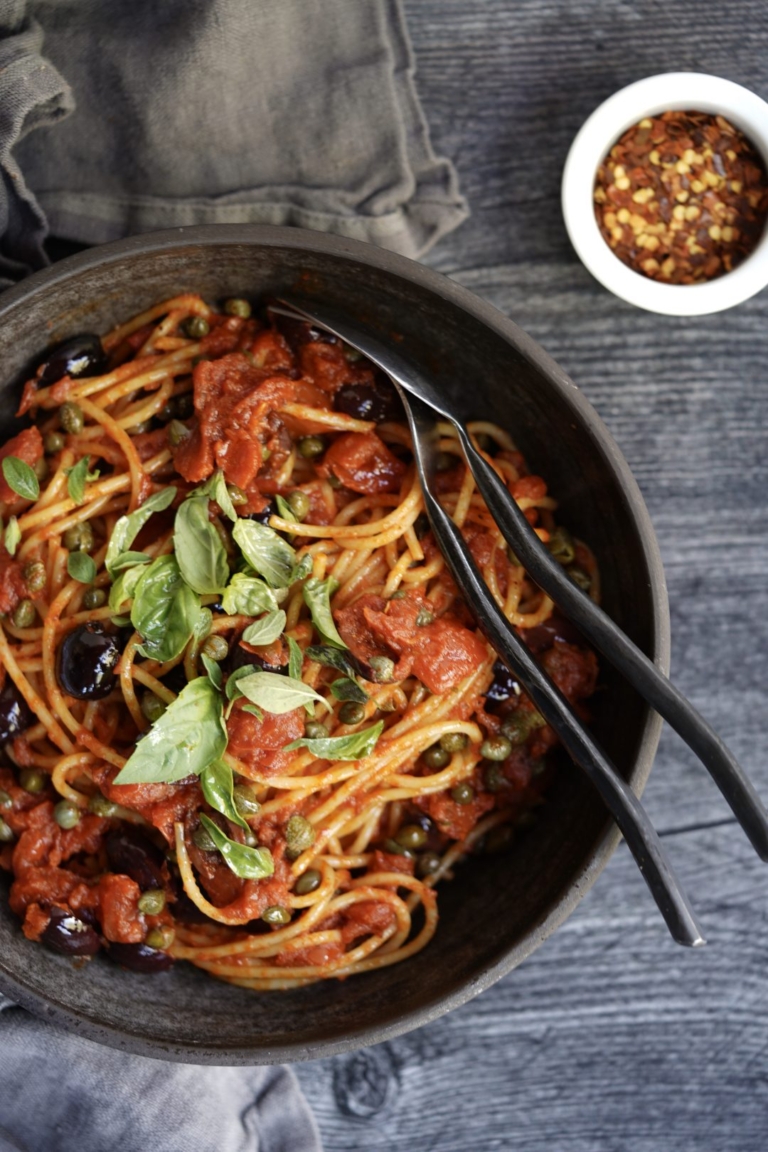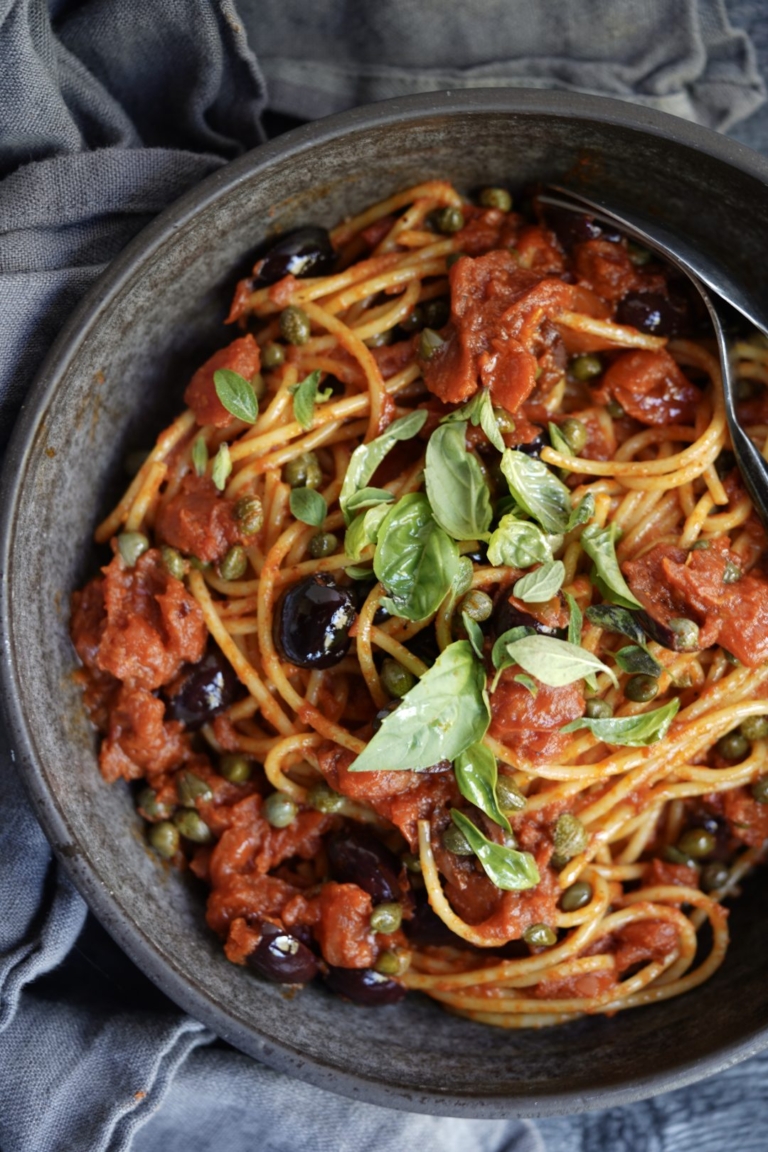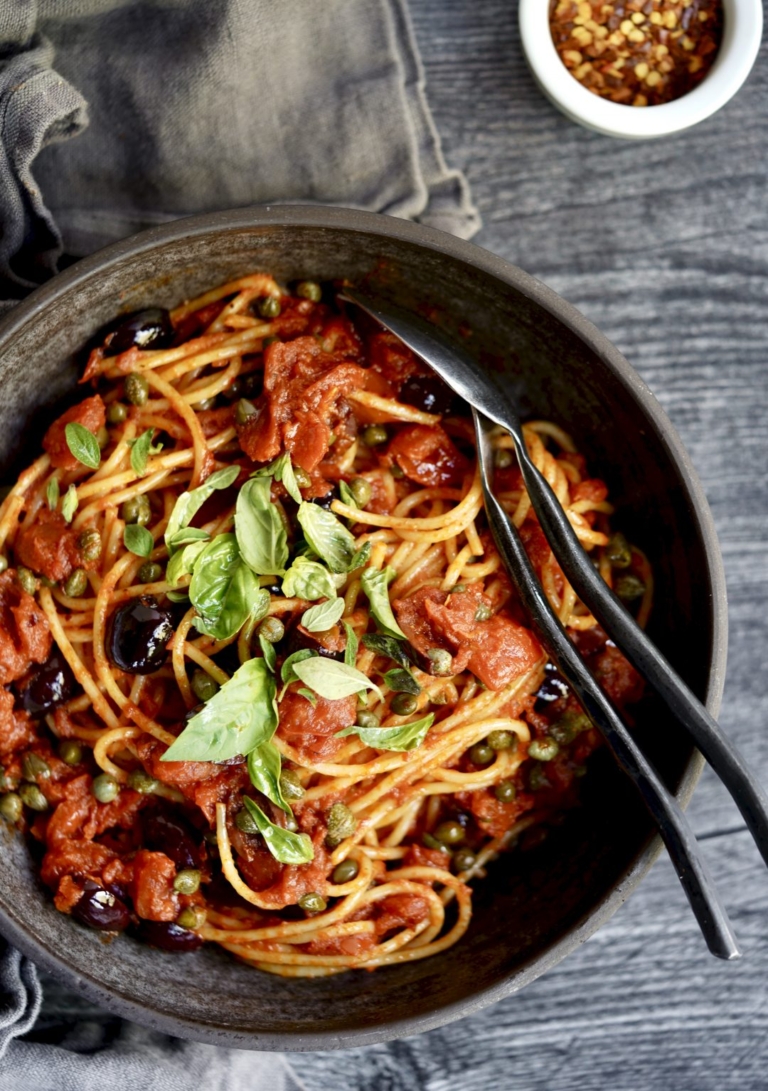Spaghetti Alla Puttanesca

Spaghetti alla Puttanesca and I go way back; to culinary school, to be exact. Without getting into too many details, let me just say it involved cooking for the school’s restaurant, an all-nighter (to which I blame, my now husband), and the last-minute suggestion he made for me to run this flavorful classic as a lunch special, despite it being a classical French restaurant. But I did it. Not only was the dish a huge hit, but it sold out halfway through service and I aced that section. I didn’t marry my husband for my pasta success that day, but let’s just say, it helped his chances.
Puttanesca’s Origin
Pasta alla Puttanesca, or Pasta Puttanesca as it’s also known, originated from Naples, possibly dating as far back as the mid-20th century, if not earlier. In Campania, this iconic Italian favorite is known as “alive and chiapparielle“(olives and capers) or simply as “pasta alla marinara“.
Some believe the name of this famous dish originated in the brothels of the Spanish Quarters. Puttanesca translates to, “in the style of the whore.” The name itself derives from the Italian word “puttana” which means whore. Puttana in turn arises from the Latin word “putida“, which means stinking.
There are a few explanations for how this flavorful sauce got its colorful name. The first is that the prostitutes made this quick dish for themselves to keep the interruption of their business to a minimum. The second interpretation is that the intense aroma of the zesty sauce would lure men from the street into brothels. A third interpretation is that they made this quick sauce for the men to eat while awaiting their turn at the brothel.
Another, less controversial, story of origin claims the dish was invented in the 1950s by Sandro Petti, co-owner of Rancio Fellone, a famous Ischian restaurant, and nightspot. It is said Petti’s moment of inspiration came when—near closing one night—Petti found a group of customers sitting at one of his tables. Petti had very few ingredients and told the group he didn’t have enough to make them a meal. The group complained that it was late and they were very hungry.
They said “Facci una puttanata qualsiasi,”or “make any kind of garbage”. In Italian, “Puttanata” means something worthless and derives from the Italian word for whore, “puttana“. Petti had only basic ingredients; tomatoes, some olives, and capers, so he used them to make the sauce for spaghetti. Later, Petti included this dish on his menu calling it Spaghetti alla Puttanesca.
No matter the origin, the beauty of this flavorful dish is that it’s a rather healthy pasta dish and one that whips up in minutes. It’s also completely doable with ready-to-use, non-perishable, inexpensive pantry ingredients. Spaghetti alla Puttanesca is a tasty and vibrant sauce that works for a quick meal in my house any day of the week.
Spaghetti Alla Puttanesca
Ingredients:
- 1 pound spaghetti or other long pasta
- Kosher salt and black pepper, to taste
- 3 garlic cloves, grated
- One (28-ounce can) whole tomatoes
- 1/4 cup Extra-Virgin olive oil, divided
- 1/4 cup capers, drained
- 1 tablespoon anchovy paste
- 2 tablespoons tomato paste
- 1/2 cup pitted Kalamata olives, halved
- 2 teaspoons fresh oregano and small basil leaves
- Crushed red pepper flakes, to taste
Directions:
- Bring large pot of salted water to boil. Cook the pasta per the package instructions. While the pasta is cooking, make the sauce.
- In a large saucepan, heat half the oil over medium heat. When hot, add the garlic and anchovy paste. Cook, while stirring, about 1 minute.
- Crush the tomatoes with a fork in a sieve, reserve the juice. Add the tomatoes to the skillet, 1/2 cup tomato juice, tomato paste and salt and pepper. Continue to cook, stirring occasionally, until the tomatoes begin to break down, the mixture thickens and the tomatoes caramelize slightly, about 10 minutes. Stir in the olives and some red pepper flakes, simmer over low heat while stirring. Taste and adjust seasoning as needed.
- Add the paste and remaining oil to the sauce. Cook over low heat, add the capers, and about 1/4 cup of the re served tomato juice to coat the noodles as needed. Garnish with oregano and basil leaves and serve.






